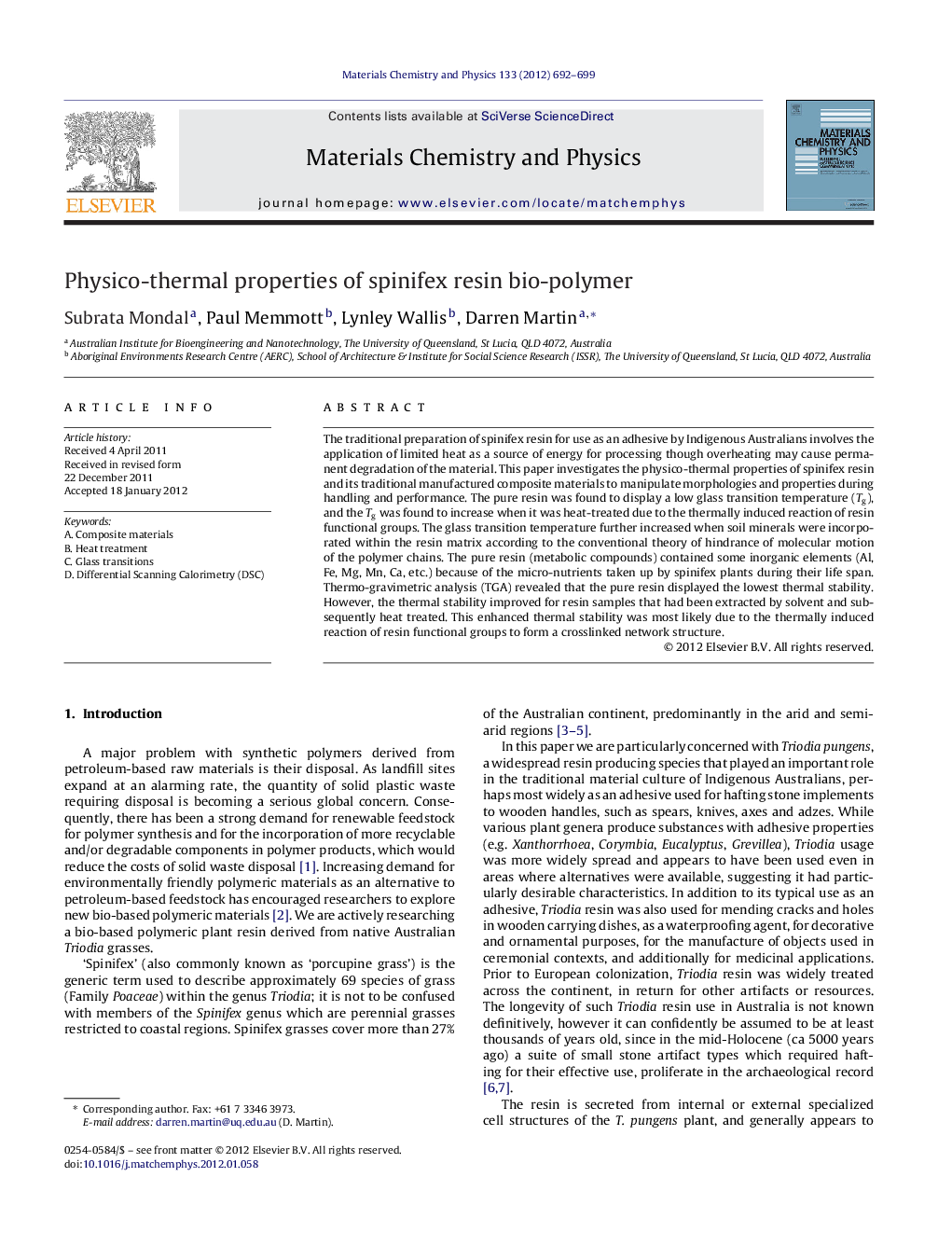| Article ID | Journal | Published Year | Pages | File Type |
|---|---|---|---|---|
| 1523239 | Materials Chemistry and Physics | 2012 | 8 Pages |
The traditional preparation of spinifex resin for use as an adhesive by Indigenous Australians involves the application of limited heat as a source of energy for processing though overheating may cause permanent degradation of the material. This paper investigates the physico-thermal properties of spinifex resin and its traditional manufactured composite materials to manipulate morphologies and properties during handling and performance. The pure resin was found to display a low glass transition temperature (Tg), and the Tg was found to increase when it was heat-treated due to the thermally induced reaction of resin functional groups. The glass transition temperature further increased when soil minerals were incorporated within the resin matrix according to the conventional theory of hindrance of molecular motion of the polymer chains. The pure resin (metabolic compounds) contained some inorganic elements (Al, Fe, Mg, Mn, Ca, etc.) because of the micro-nutrients taken up by spinifex plants during their life span. Thermo-gravimetric analysis (TGA) revealed that the pure resin displayed the lowest thermal stability. However, the thermal stability improved for resin samples that had been extracted by solvent and subsequently heat treated. This enhanced thermal stability was most likely due to the thermally induced reaction of resin functional groups to form a crosslinked network structure.
► Physico-thermal properties of spinifex resin biopolymer and their composite materials. ► Tg increased for soil minerals incorporated resin materials. ► Thermally induced reaction of resin functional groups improves thermal properties.
